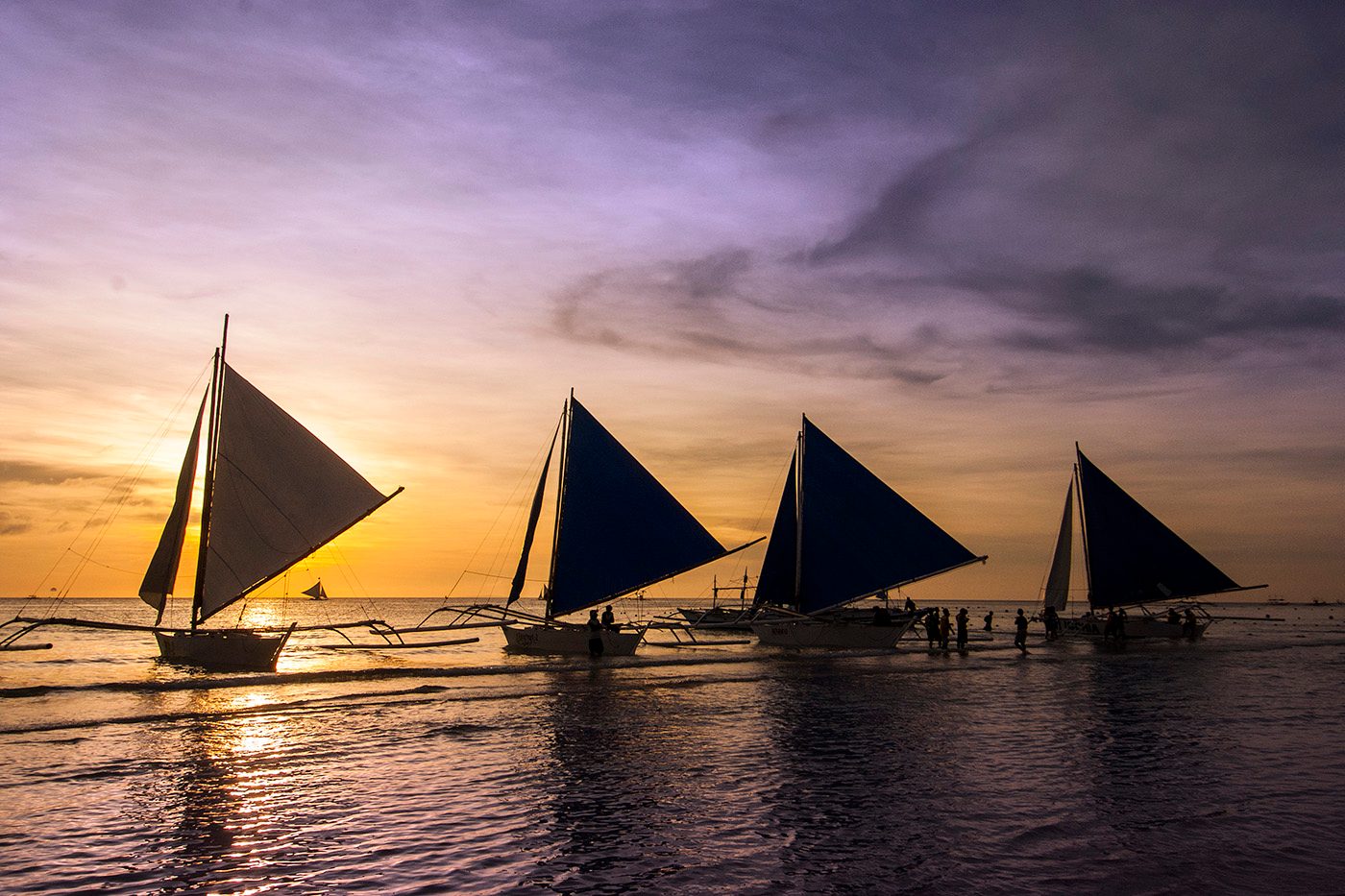SUMMARY
This is AI generated summarization, which may have errors. For context, always refer to the full article.

MANILA, Philippines – When a building of Seven Seas Properties was found in one of Boracay’s wetlands (areas saturated with water that serve as catch basin for rain), the environment department strictly ordered its demolition. Without contesting, the developer readily complied.
The property of Seven Seas is just one of the 11 establishments situated in proposed critical habitat areas by the Biodiversity Management Bureau (BMB) of the Department of Environment and Natural Resources (DENR).
These critical habitat areas in barangays Balabag and Yapak in Malay, Aklan would be for colonies of flying foxes, nesting grounds of marine turtles, and developing corals.
“‘Yung mga nasa wetland, gigibain natin (Those properties located in wetlands, we will demolish). Our internal agreement is that the local government unit will execute [the demolition]. We just tell them what is illegal and subject for demolition,” Environment Secretary Roy Cimatu told stakeholders in a meeting at his office on Wednesday, April 11.
Aside from Seven Seas, establishments of Boracay West Cove, Crimson Resort & Spa, Movenpick Resort & Spa, Ecovillage Resort & Convention Center, Costa Vista Boracay, Shangri-La, Alta Vista de Boracay, San Miguel Corporation, Mabuhay Maritime Express (Philippine Airlines), as well as the Demostenes-Tirol family are found within the proposed critical habitat areas.
Cimatu said he will sign a department administrative order by end-April, declaring over 750 hectares, including privately-held lands, as part of the Boracay Critical Habitat.
Not all for demolition
But BMB Director Theresa Mundita Lim clarified that just because a property falls within a critical habitat area does not mean it will be up for demolition.
“Identifying critical habitat areas means providing an avenue for a community-driven ecosystem management approach, which guarantees the collective participation of all stakeholders,” Lim told reporters. (READ: Villanueva urges DENR to declare Boracay as ‘critical’ area)
With an administrative order set to be signed, the DENR prodded local government units, residents, businesses, and private landowners to work together on a conservation plan that could make demolition of establishments unnecessary.
“Demolition is possible. But It could be as easy as monitoring and counting bats or limiting tourists [in] certain periods or places,” Lim said.
“Activities will be limited because bats are nocturnal. If there will be construction, it should not be near the critical habitat areas. There will be restrictions. There will be trade-offs. If you are going to landscape, as much as possible you should use local native plants,” she added.

Property owners present in the stakeholders’ meeting showed support for the DENR’s plan to declare over 750 hectares of Boracay a critical habitat, in a bid to protect the endangered species in the island.
Desiree Gestiada, corporate social responsibility (CSR) manager of Seven Seas, said they will cooperate with the crafting of the conservation plan that would form part of the administrative order.
“We fully support the government in their thrust to proclaim critical habitat areas. As a new player, we would like to align our CSR programs with what the government wants to do,” Gestiada said during the meeting.
Protecting biodiversity
Boracay Property Holdings Incorporated chief financial officer Peter Montalban also assured the DENR that his firm would not get in the way of the department’s plan to save Boracay’s biodiversity.
Lim had said that some roosting sites of flying foxes are within the 80-hectare property of Boracay Property Holdings. (READ: DENR gives erring Boracay establishments 2 months to ‘shape up’)
“We would like to express our full support [for] protecting Boracay. There has been a great decline in [the] number of bats. When Shangri-La started occupying the area, the number of bats [became] properly managed. It slowly increased. What I’m trying to say is we have conducted so many studies on these bats. These bats are very specific on certain trees,” Montalban added.
Shangri-La’s Boracay Resort & Spa has been in collaboration with Friends of the Flying Foxes, a non-profit organization that protects the natural habitat of the flying foxes, in organizing an annual event to count the bats using the flyout method.
According to past counts, the number of flying foxes has increased from 1,709 in 2012 to 2,238 in 2014. Since 2009, Shangri-La has also planted fruit trees to increase the flying foxes’ food supply. In 2015, the hotel surpassed its goal of planting 50 trees by planting a combined 65 papaya, calamansi, mango, and guava trees.
Costa Vista Boracay also expressed support for the DENR’s initiative.
“We fully support this declaration by the DENR. We are just a new player and we have started initiatives and we affirm our new development standards. As early as now, we are planning the next steps in our development management plan,” Alan Santos, representative of Costa Vista Boracay, said during the meeting.
Cimatu thanked the private property landowners present for showing initiative and support in protecting Boracay’s endangered species.
“These bats are very sensitive. Even the bats inside caves are no longer able to reproduce because they would not mate when disturbed,” he said.
“We are very much concerned [about] that population of bats [which] are already endangered…. They are being disturbed by tourists. We need to maintain their habitat undisturbed, so thank you,” he added.
The DENR plan comes amid President Rodrigo Duterte’s order to close Boracay to tourists for 6 months, starting April 26. – Rappler.com
Add a comment
How does this make you feel?
There are no comments yet. Add your comment to start the conversation.